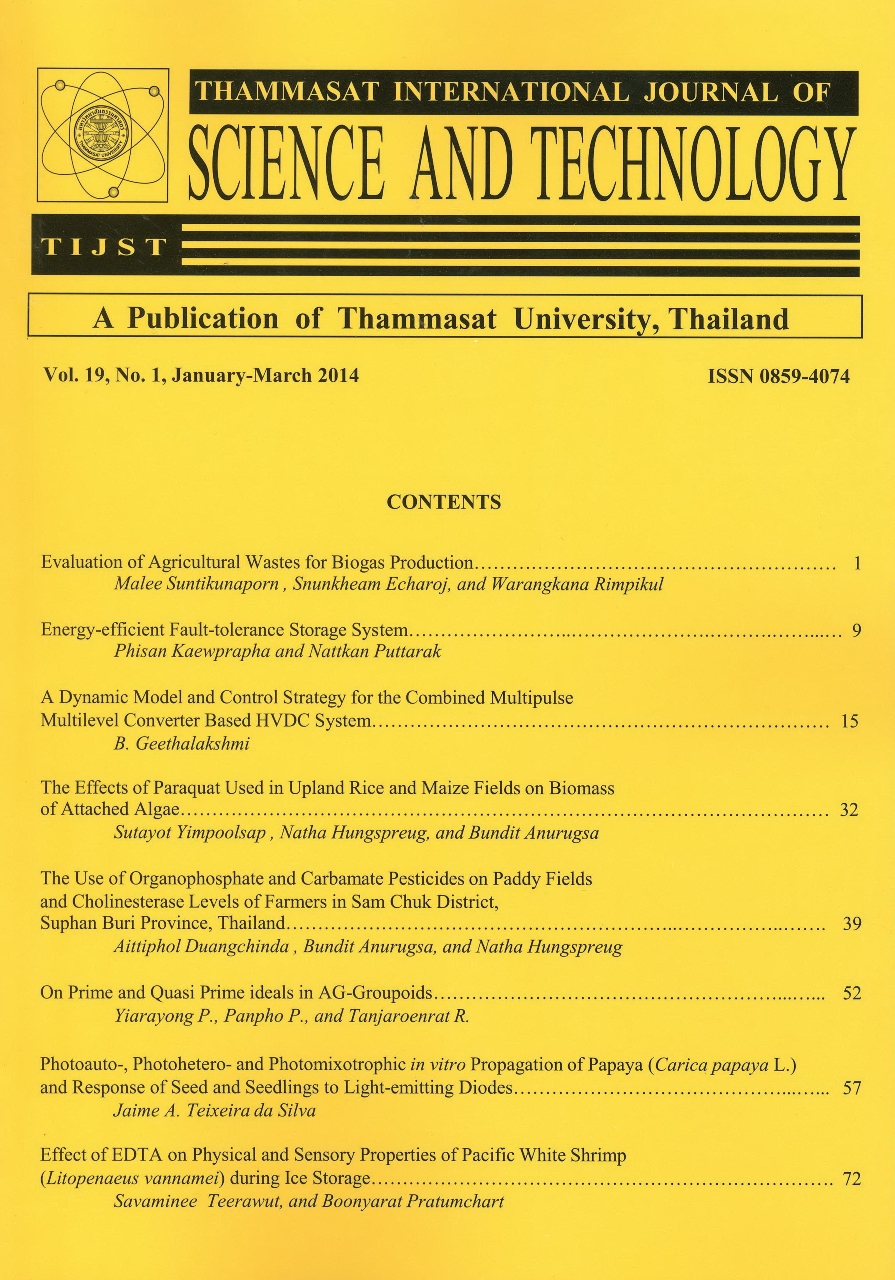Intrinsic Instability of Adiabatic and Non-adiabatic Premixed Flames at Sufficiently Low Activation Energy
Main Article Content
Abstract
The effects of low activation energy on the intrinsic instability of adiabatic and non-adiabatic cellular premixed flames were studied by using two-dimensional unsteady calculations of reactive flows based on the compressible Navier-Strokes equation. For the Lewis number that was lower than unity (Le=0.5), the growth rate and the normalized burning velocity (Scf/Sh) increased when the activation energy was lower for adiabatic premixed flames due to the decrease in the Zeldovich number. When the heat loss increased, the growth rate was lower and the ormalized burning velocity was higher. However, he ratio of the cell size to the critical wavelength (Dcell/c) was smaller compared to that of adiabatic premixed flames. For the Lewis number that was unity (Le=1.0), the growth rate and the normalized burning velocity were almost constant and slightly decreased even at sufficiently low activation energy. Moreover, for the Lewis number was higher unity (Le=1.5), the growth rate and the normalized burning velocity were lower. Even at sufficiently low activation energy for adiabatic premixed flames and slightly lower growth rate and lower normalized burning velocity were obtained. The results show that a lower growth rate is obtained at sufficiently low activation energy due to a decrease in the Zeldovich number. Even at low activation energy, the effects of hydrodynamic instability play a more destabilizing role (stabilizing role) for Le<1.0 (Le>1.0) to obtain a higher (a lower) normalized burning velocity compared to adiabatic cellular premixed flames owing to the heat.
Article Details
How to Cite
Amornrat, K., & Sumrerng, J. (2015). Intrinsic Instability of Adiabatic and Non-adiabatic Premixed Flames at Sufficiently Low Activation Energy. Science & Technology Asia, 20(2), 44–52. retrieved from https://ph02.tci-thaijo.org/index.php/SciTechAsia/article/view/35787
Section
Engineering


